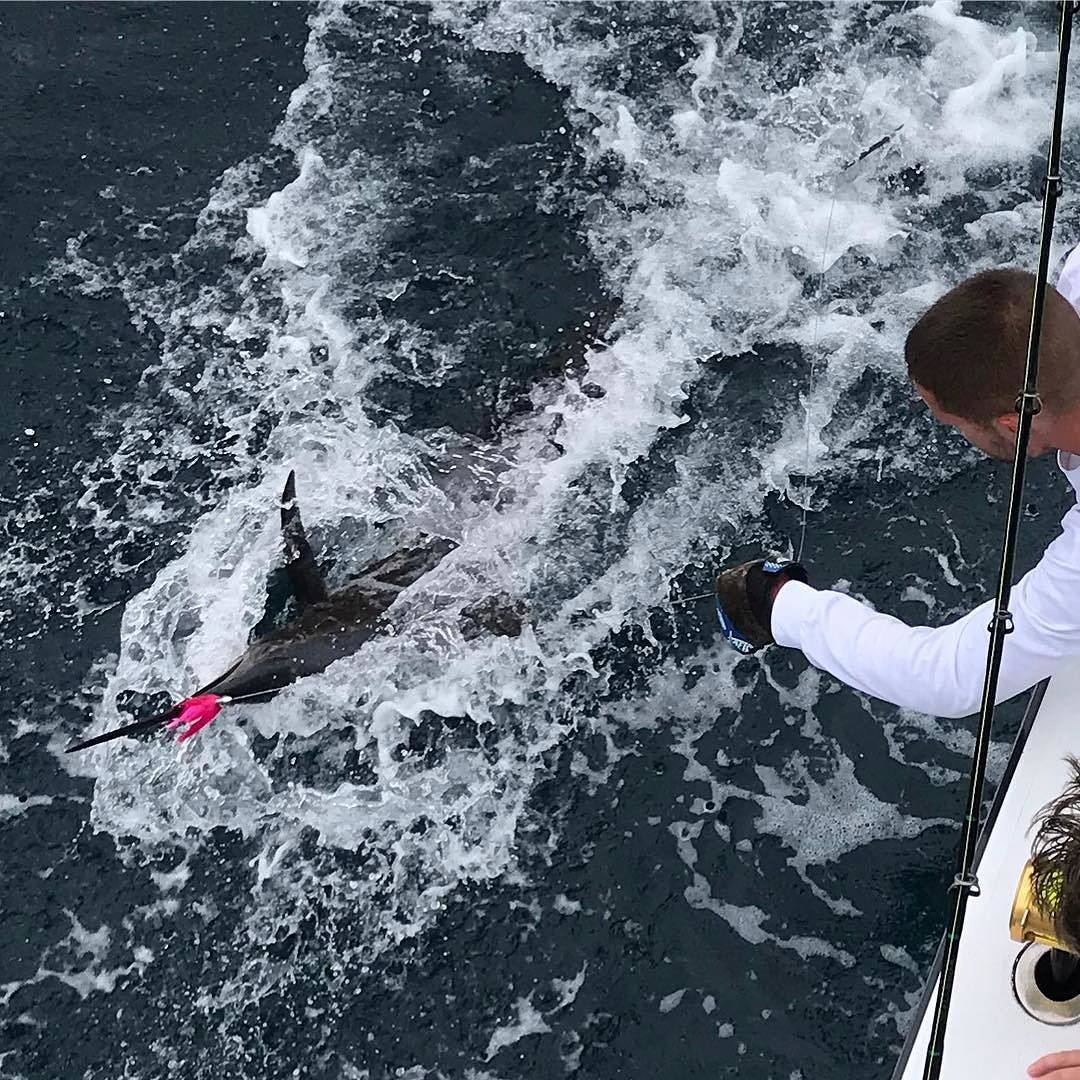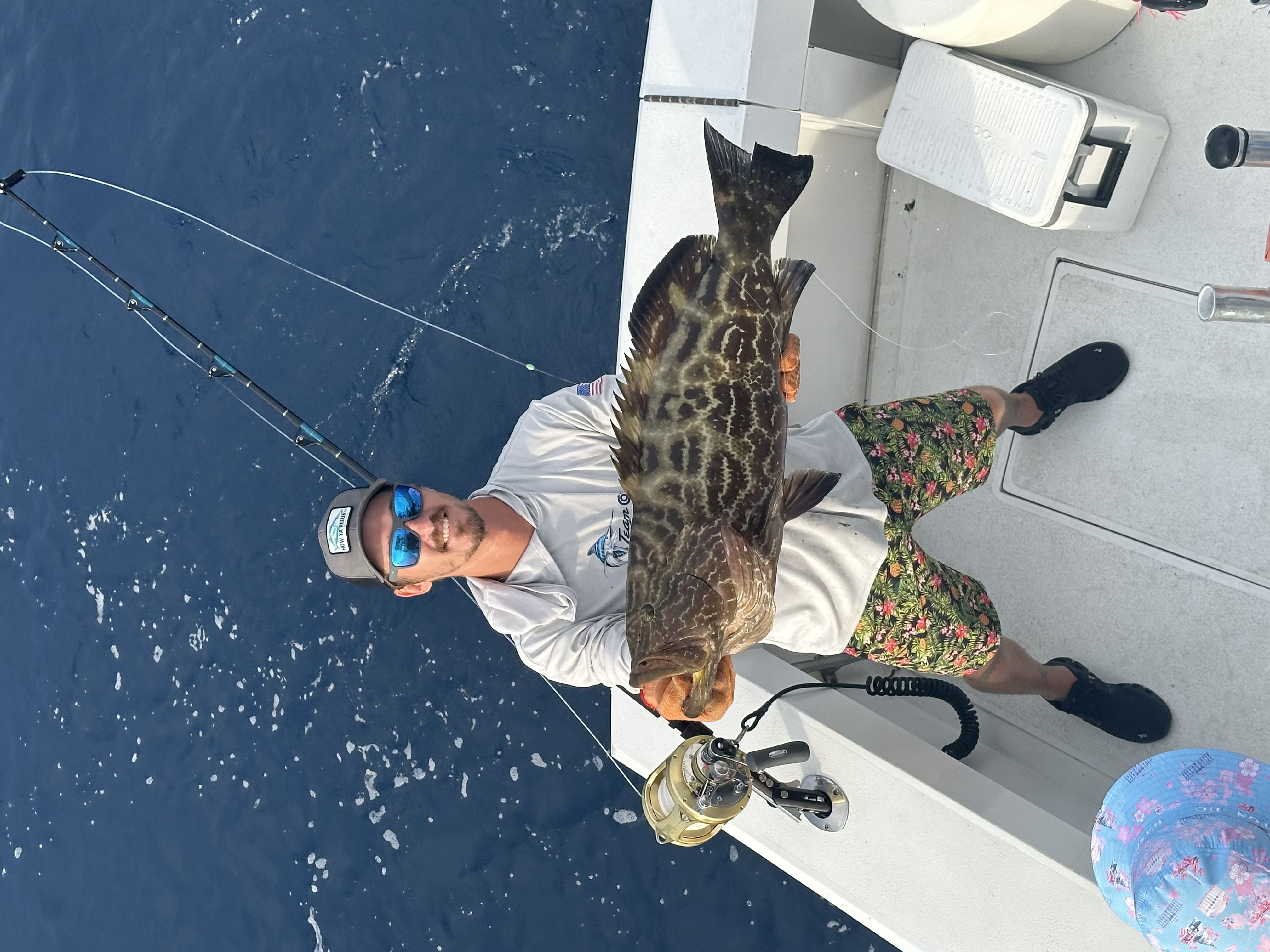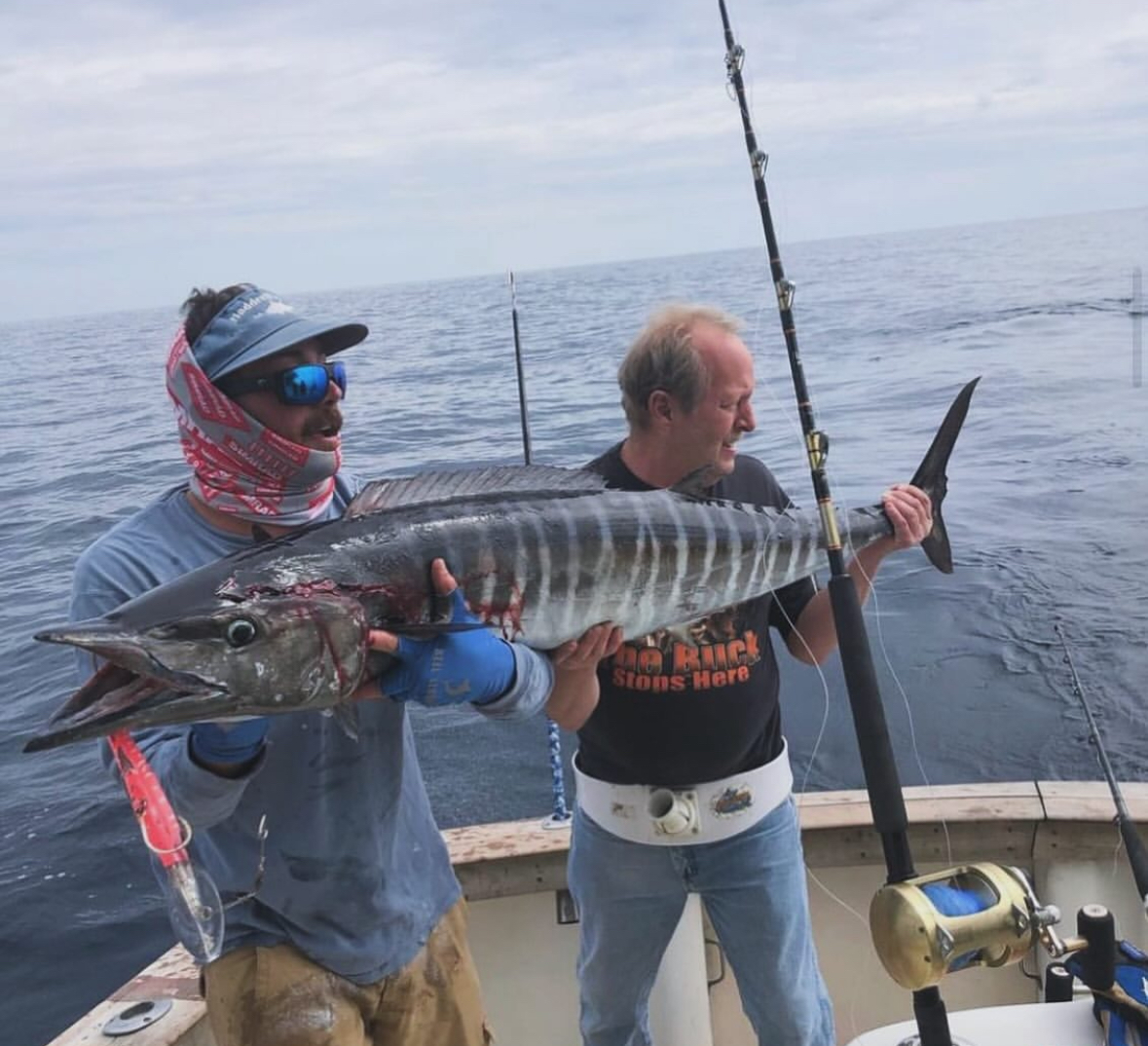VIP SPORTFISHING & OCEAN SKEET
Deep Sea Fishing in Morehead City
Full Day Gulf Stream
Deep Sea, Nearshore Fishing in Miami Beach
Miami Offshore Trolling Fun!
Inshore, Deep Sea, Nearshore in Miami Beach
Bachelor Party Fishing Fun!
Deep Sea Fishing in West Palm Beach
Full & 3/4 Day Fishing Trips
Deep Sea Fishing in West Palm Beach
1/2 Day Fishing Trip
Deep Sea, Nearshore Fishing in Key West
Key West 47 Ft Hatteras
Deep Sea, Nearshore Fishing in Johns Island
Deep Sea Trolling & Bottom Fishing
Deep Sea, Nearshore Fishing in Corpus Christi
Texas Gulf Coast Fishing
Dry Tortugas Multi-Day Trip
We started Captain Experiences to make it easy to book fishing and hunting guides around the world. With over 2,000 Damn Good Guides, our platform makes finding and booking a trip seamless. Head here to check out our trips.
What is a Pelagic Fish?
The definition varies a bit depending on where you look, but pelagic can be defined as relating to open waters or living in water away from shore and the bottom. Using both descriptions, it’s easy to think of giant tuna species that patrol the deep open ocean far from shore, but it's more complicated than that. Let's dive in.

What is the Pelagic Zone?
All of the open ocean water—except for places near the bottom and near the shore—are included in the pelagic zone. This zone begins where the coastal zone ends, with the low tide mark being the defining line between the two. This makes the pelagic zone much closer to shore and includes more fish species than most people assume. To put everything into perspective, the pelagic marine environment is the largest aquatic environment on earth and holds 11% of the world’s fish species.
Where are Pelagic Fish Found?
The term “pelagic species” is commonly used when referring to open-ocean predators, but pelagic fish species can be found in both freshwater and marine environments. Small freshwater pelagic fish are being evaluated as a potential food source for undernourished communities in Africa.
Because the pelagic zone comes so close to shore, redfish, speckled sea trout, amberjack, and even cobia are considered pelagic species. Popular sportfish like tuna, marlin, sailfish, and swordfish live farther offshore in the open waters over the continental shelf and are all pelagic species as well. If you're looking to target these deep sea gamefish, you can book a trip with the top guides across the US here.
Not all deep-sea fish are considered pelagic, with some fish species living too deep in the water column. Although swordfish can live in depths of up to 2,000ft, they are still pelagic species. Meanwhile, several species of spiderfish live on the seafloor and are considered benthic fish.

The fish species within the pelagic zone have a variety of environmental factors to deal with just to be able to breathe, let alone find food. Life in the pelagic zone is controlled by oxygen levels, sunlight, structure, temperature, and available nutrients in the water.
Each species is different and prefers slightly different parameters that allow them to utilize the same waters, but not always at the same time. Wahoo, for example, prefer water temperatures between 70-80 degrees ,while kingfish inhabit cooler water around 60-70 degrees. While these fish will occasionally overlap, they generally don’t have around long enough to compete for the same food sources.
Costal Pelagic Vs. Oceanic Pelagic
Usually in a conversation between anglers, the term pelagic is used without distinction. With such an abundant category of fish spread out over a vast area, the terms coastal pelagic and oceanic pelagic become necessary to prevent confusion.
Coastal Pelagic Species
Coastal pelagic species are defined as fish living in waters less than 655 feet deep, meaning they are typically above the continental shelf. Some of the most popular coastal pelagic species include wahoo, blackfin tuna, mackerel, redfish, and speckled sea trout. Although these fish migrate and may cross over the continental shelf, they are considered coastal because their natural range and feeding grounds are within the coastal pelagic zone.

Oceanic Pelagic Species
Oceanic pelagic species pick up where the costal pelagic zone ends and contain fish species that are more commonly referred to as pelagic species. Oceanic pelagic species are usually found below the continental shelf where sunlight is hard to come by. These fish generally grow larger and are some of the popular sportfish in the world, including swordfish, yellowfin tuna, bluefin tuna, and sharks. Many of these species are also considered highly migratory species and cover long distances in search of spawning grounds or food.
Pelagic Species Vs. Highly Migratory Species
Some of the most popular deep-sea sportfish are both pelagic species and highly migratory species. While redfish are technically a pelagic species, they are not considered a highly migratory species, but bluefin tuna are pelagic and highly migratory.
The difference is in the distance these fish travel throughout their life. Bluefin Tuna will travel from California, past Hawaii, and end up in Japan—thousands of miles away from where they started. Redfish, on the other hand, will pretty much just stay put within their typical range. Even though redfish do migrate from deeper waters into shallow estuaries, this is nowhere near highly migratory compared to the thousands of miles a tuna may travel in a calendar year.

Pelagic Fish Take Away
Pelagic fish species make up the vast majority of sportfish we all love to catch. From redfish migrating in estuaries, to swordfish feeding in the dark depths past the continental shelf, the pelagic zone is huge. With all of this information about the species and environment that make up the pelagic zone, you can start to build a better understanding of the forces at play when you head out on your next trip. If you know what is going on in the water you will find more success each time to wet a line.
Joey Butrus
Updated on July 31, 2023

July 31, 2024

June 3, 2021

August 21, 2023

January 19, 2021

June 28, 2023
Related Articles
August 2, 2023
December 8, 2021
February 28, 2022
Featured Locations
- Fishing Charters Near Me
- Austin Fishing Guides
- Biloxi Fishing Charters
- Bradenton Fishing Charters
- Cabo San Lucas Fishing Charters
- Cancun Fishing Charters
- Cape Coral Fishing Charters
- Charleston Fishing Charters
- Clearwater Fishing Charters
- Corpus Christi Fishing Charters
- Crystal River Fishing Charters
- Dauphin Island Fishing Charters
- Daytona Beach Fishing Charters
- Destin Fishing Charters
- Fort Lauderdale Fishing Charters
- Fort Myers Fishing Charters
- Fort Walton Beach Fishing Charters
- Galveston Fishing Charters
- Gulf Shores Fishing Charters
- Hatteras Fishing Charters
- Hilton Head Fishing Charters
- Islamorada Fishing Charters
- Jacksonville Fishing Charters
- Jupiter Fishing Charters
- Key Largo Fishing Charters
- Key West Fishing Charters
- Kona Fishing Charters
- Lakeside Marblehead Fishing Charters
- Marathon Fishing Charters
- Marco Island Fishing Charters
- Miami Fishing Charters
- Montauk Fishing Charters
- Morehead City Fishing Charters
- Naples Fishing Charters
- New Orleans Fishing Charters
- New Smyrna Beach Fishing Charters
- Ocean City Fishing Charters
- Orange Beach Fishing Charters
- Panama City Beach Fishing Charters
- Pensacola Fishing Charters
- Pompano Beach Fishing Charters
- Port Aransas Fishing Charters
- Port Orange Fishing Charters
- Rockport Fishing Charters
- San Diego Fishing Charters
- San Juan Fishing Charters
- Sarasota Fishing Charters
- South Padre Island Fishing Charters
- St. Augustine Fishing Charters
- St. Petersburg Fishing Charters
- Tampa Fishing Charters
- Tarpon Springs Fishing Charters
- Venice Fishing Charters
- Virginia Beach Fishing Charters
- West Palm Beach Fishing Charters
- Wilmington Fishing Charters
- Wrightsville Beach Fishing Charters

































